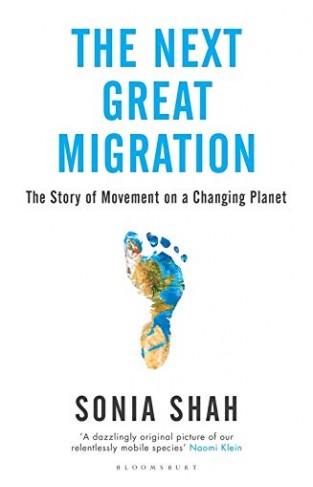The Next Great Migration: The Beauty and Terror of Life on the Move
By: Sonia Shah
-
Rs 2,656.50
- Rs 3,795.00
- 30%
You save Rs 1,138.50.
Due to constant currency fluctuation, prices are subject to change with or without notice.
We are surrounded by stories of people on the move. Wild species, too, are escaping warming seas and desiccated lands in a mass exodus. Politicians and the media present this upheaval of migration patterns as unprecedented, blaming it for the spread of disease and conflict, and spreading anxiety across the world as a result.
But the science and history of migration in animals, plants, and humans tell a different story. Far from being a disruptive behaviour, migration is an ancient and lifesaving response to environmental change, a biological imperative as necessary as breathing. Climate changes triggered the first human migrations out of Africa. Falling sea levels allowed our passage across the Bering Sea. Unhampered by borders, migration allowed our ancestors to people the planet, into the highest reaches of the Himalayan Mountains and the most remote islands of the Pacific, disseminating the biological, cultural and social diversity that ecosystems and societies depend upon.
In other words, migration is not the crisis - it is the solution.
Tracking the history of misinformation from the 18th century through to today's anti-immigration policies, The Next Great Migration makes the case for a future in which migration is not a source of fear, but of hope.
We are surrounded by stories of people on the move. Wild species, too, are escaping warming seas and desiccated lands in a mass exodus. Politicians and the media present this upheaval of migration patterns as unprecedented, blaming it for the spread of disease and conflict, and spreading anxiety across the world as a result.
But the science and history of migration in animals, plants, and humans tell a different story. Far from being a disruptive behaviour, migration is an ancient and lifesaving response to environmental change, a biological imperative as necessary as breathing. Climate changes triggered the first human migrations out of Africa. Falling sea levels allowed our passage across the Bering Sea. Unhampered by borders, migration allowed our ancestors to people the planet, into the highest reaches of the Himalayan Mountains and the most remote islands of the Pacific, disseminating the biological, cultural and social diversity that ecosystems and societies depend upon.
In other words, migration is not the crisis - it is the solution.
Tracking the history of misinformation from the 18th century through to today's anti-immigration policies, The Next Great Migration makes the case for a future in which migration is not a source of fear, but of hope.
The Next Great Migration: The Beauty and Terror of Life on the Move
By: Sonia Shah
Rs 2,656.50 Rs 3,795.00 Ex Tax :Rs 2,656.50
Zubin Mehta: A Musical Journey (An Authorized Biography)
By: VOID - Bakhtiar K. Dadabhoy
Rs 630.00 Rs 1,050.00 Ex Tax :Rs 630.00
Beyond Twilight Explore The World Of vampire
By: Manuela Dunn-Mascetti
Rs 310.50 Rs 345.00 Ex Tax :Rs 310.50
The Lost Hero: Heroes of Olympus Book
By: Rick Riordan
Rs 1,705.50 Rs 1,895.00 Ex Tax :Rs 1,705.50
The Hunger but Mainly Death Games: A Parody
By: Bratniss Everclean
Rs 716.00 Rs 895.00 Ex Tax :Rs 716.00
Dr Sigmundus: The Cracked Mirror The Promises of Dr Sigmundus
By: Brian Keaney
Rs 1,676.00 Rs 2,095.00 Ex Tax :Rs 1,676.00
No similar books from this author available at the moment.
No recently viewed books available at the moment.
Zubin Mehta: A Musical Journey (An Authorized Biography)
By: VOID - Bakhtiar K. Dadabhoy
Rs 630.00 Rs 1,050.00 Ex Tax :Rs 630.00
The Next Great Migration: The Beauty and Terror of Life on the Move
By: Sonia Shah
Rs 2,656.50 Rs 3,795.00 Ex Tax :Rs 2,656.50















-120x187.jpg?q6)









-120x187.jpg?q6)



